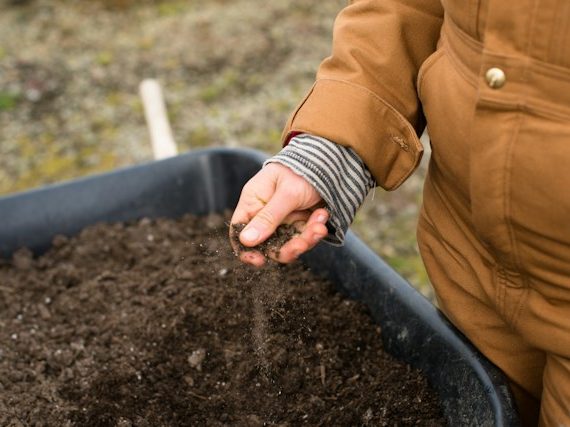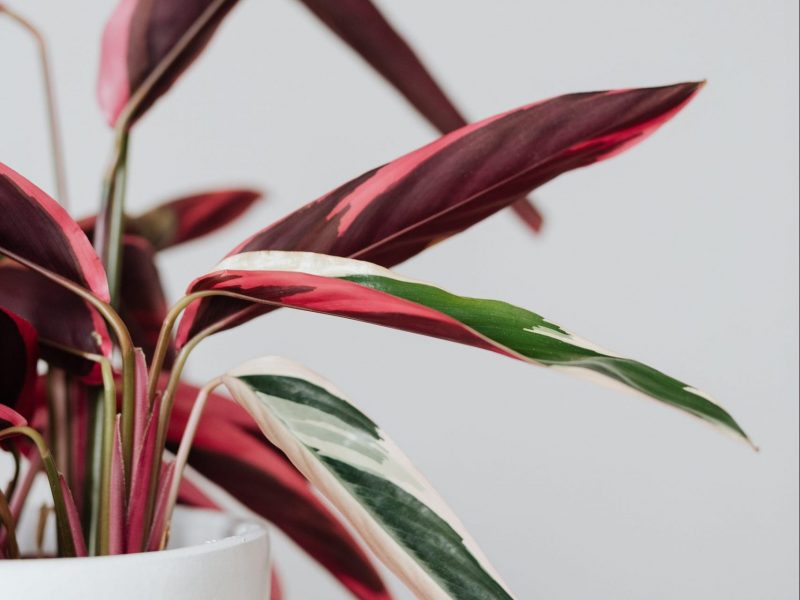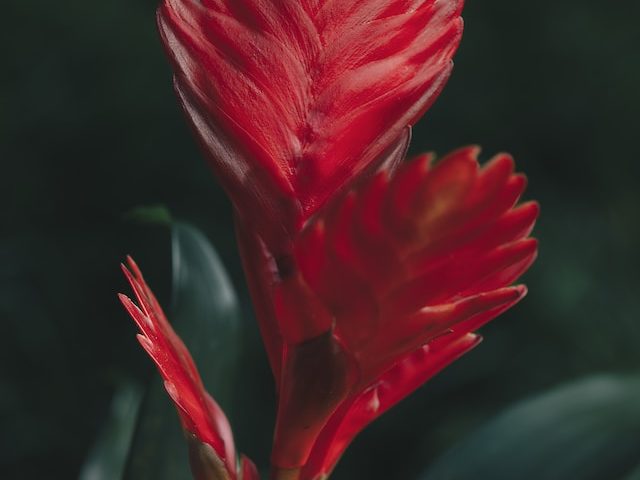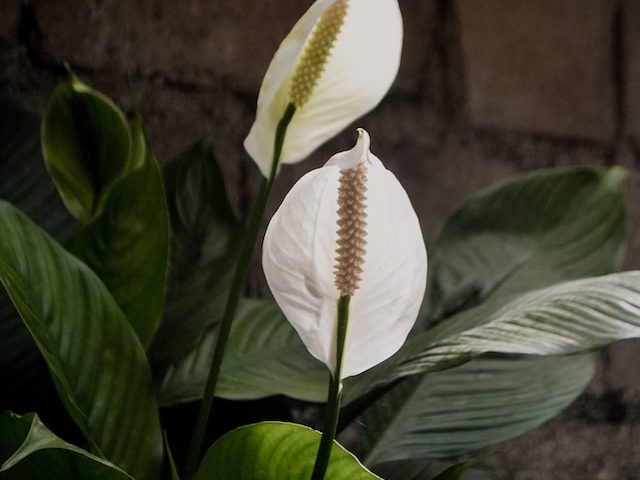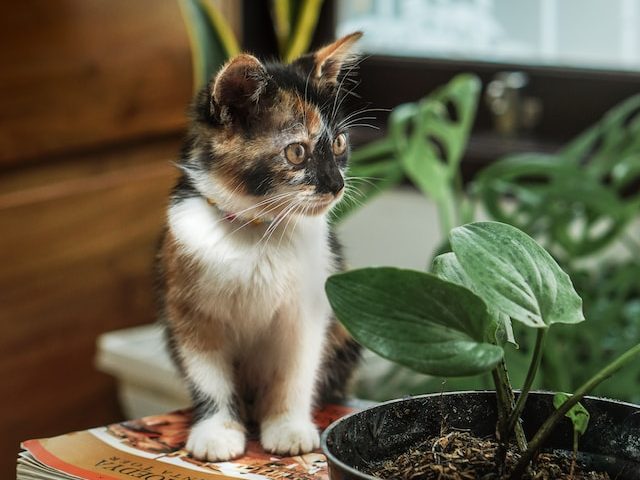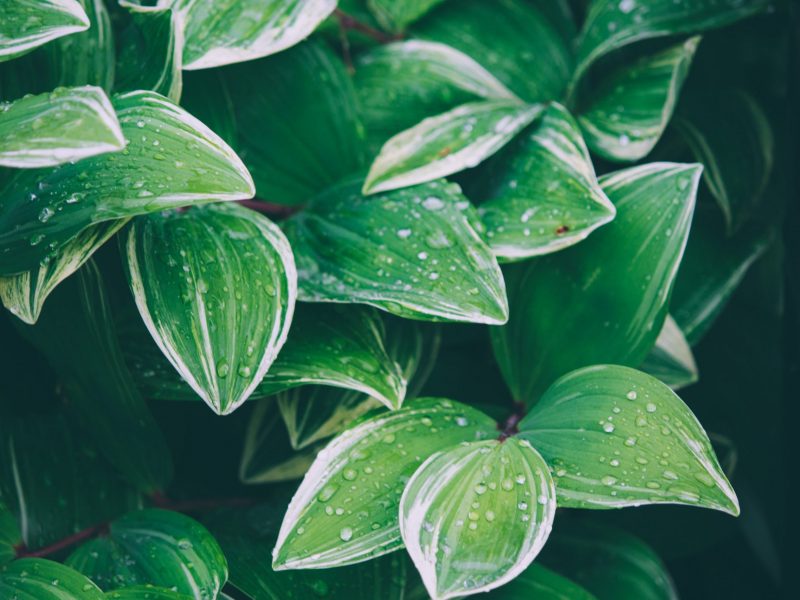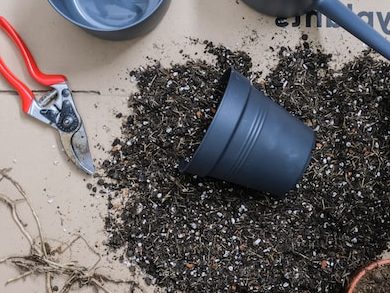Satin Pothos

Introduction to Satin Pothos
The Satin Pothos (Scindapsus pictus), is a vibrant houseplant, loved for its striking, silvery leaves. Native to Southeast Asia, it can adapt well to a range of environments, making it suitable for most homes. It’s worth noting though that it is a little trickier to care for than a lot of other Pothos types and you may often find curling leaves or leggy growth if something isn’t right. This is because it’s not actually a true Pothos, instead, it’s more closely related to the Philodendron species
Satin Pothos Characteristics and Benefits
Main Characteristics
- Leaf Shape and Colour: The Satin Pothos features large, heart-shaped leaves splashed with unique silver spots. This colouring gives the plant a satin-like appearance, hence its common name.
- Size: When fully grown, the Satin Pothos can reach a length of up to 3 metres. However, it’s size can be easily managed with regular pruning.
- Growth Habit: The Satin Pothos is a trailing plant, making it ideal for hanging baskets or high shelves where its foliage can elegantly cascade down.
Key Benefits
- Air Purification: The Satin Pothos is known for its excellent air purifying abilities. It helps to remove toxins such as benzene, formaldehyde, and xylene from the air.
- Decorative Appeal: Thanks to its attractive foliage and trailing growth habit, the Satin Pothos adds a chic, tropical touch to any indoor space.
Light Requirements for Satin Pothos
Indirect, bright light is the ideal condition for your Satin Pothos. Position it near a window that receives lots of natural light but ensure it’s not in the direct path of direct sunlight rays. Too much direct sun can scorch the leaves, causing them to turn yellow, brown and wilt.
The Satin Pothos can also tolerate lower light conditions. However, while it might survive in dimmer corners, it won’t grow as vigorously. Note that the silver variegation on the leaves may fade if the plant does not get enough light. The new leaves may be smaller and you might find that with low light levels, the vines can become leggy.
Artificial lights can also serve as a good source of illumination for your Satin Pothos. These plants can thrive under fluorescent lights, making them perfect for offices or rooms with little natural light.
Note: changing the lighting conditions abruptly can stress the plant. It’s best to gradually adjust the light exposure, particularly if moving from a darker to a lighter spot.
Watering your Satin Pothos: How, When and How Much
This plant thrives in a consistently moist environment, yet it’s crucial not to overwater. Understanding how, when and how much to water can make all the difference in your plant’s health and vitality.
The ‘How’
To water your Satin Pothos, use a watering can or jug with a narrow spout. This enables you to aim the water directly at the soil, avoiding the leaves. If the top leaves do get wet during watering, it can mean that they start to rot if the temperatures are low. Another top tip is that the water should be room temperature, as cold water can cause leaf shock.
The ‘When’
As a general rule, water your Satin Pothos when the top 1-2 inches of soil are dry. Resist the urge to set a strict watering schedule, as this can lead to over or underwatering. Instead, monitor the soil’s moisture levels regularly and adjust your watering habits accordingly.
The ‘How Much’
The amount of water your Satin Pothos needs will depend on various factors such as pot size, environmental conditions, and the plant’s size. A good rule of thumb is to water until you see some draining out of the bottom of the pot. This indicates that the water has reached the entire root system.
Temperature Requirements for Satin Pothos
The Satin Pothos thrives in a relatively moderate temperature range. Ideally, the plant prefers temperatures between 60-85°F (15-29°C). A sudden or drastic change in temperature can cause stress to the plant, leading to leaf drop or yellowing leaves.
Winter Care
In winter months, maintain an indoor temperature above 50°F (10°C) to prevent the plant from freezing. Despite its hardy nature, the Satin Pothos does not tolerate cold well and exposure to frost may cause irreversible damage.
Summer Care
In summer, the Satin Pothos can withstand higher temperatures, provided it is not exposed to direct sunlight. Too much heat can scorch the plant’s leaves, while too much light can cause the leaf variegation to fade so be careful about this in the peak of summer.
Temperature Fluctuations
The Satin Pothos is sensitive to sudden temperature changes. Try to keep the plant in a stable environment, away from drafts, heaters and air conditioners, which can lead to fluctuating temperatures.
Humidity Requirements
Satin Pothos plants thrives in high humidity environments. This tropical plant is native to the rainy jungles of Southeast Asia and appreciates a similar atmosphere in your home. However, it’s adaptable and can also tolerate average indoor humidity levels.
While you may not be able to reach the humidity of a jungle (and even if you could, you wouldn’t want to live in it), there are a few ways you can boost the humidity for your plant.
Increasing Humidity:
- Consider placing your Satin Pothos on a tray of water with pebbles, ensuring the pot is not submerged in water but elevated by the pebbles.
- Group your Satin Pothos with other humidity-loving plants. As they transpire, they create a microclimate with increased humidity.
- You could also use a humidifier, particularly during winter months when indoor heating tends to dry out the air.
Signs of Low Humidity:
- Brown leaf tips or edges are often a sign of dry air.
- Crisping or curling leaves could also indicate low humidity.
- Stunted growth can be another common symptom of inadequate humidity but check for other issues before diagnosing.
Choosing the Right Soil for Your Satin Pothos
Choosing the right soil for your Satin Pothos is essential for its growth and overall health. A well-draining and aerated potting mix can provide the ideal environment for this plant.
Compost: A soil rich in compost is a suitable choice. The compost provides the necessary organic matter for the Satin Pothos, which promotes healthy root development.
Perlite: You can also add perlite to the soil to enhance drainage. This porous volcanic rock helps to prevent waterlog and root rot, common issues with Satin Pothos.
Sphagnum Moss: This type of moss can help regulate moisture and facilitates good airflow to the roots. A part of this in your potting mix can be beneficial.
Remember, a good soil mix for Satin Pothos should consist of one part perlite or sand, one part compost, and one part sphagnum moss or peat moss.
You might also want to pay attention to the pH level of the soil as it should ideally be between 6.1 and 6.5 for your Satin Pothos to thrive.
Repotting a Satin Pothos
Repotting not only gives the plant more room to grow but also rejuvenates its nutrient supply. It is commonly forgotten by plant parents but is something that you definitely need to add to your plant care list.
When to Repot
Typically, a Satin Pothos requires repotting every two to three years. Signs to watch out for include roots growing out of the drainage holes and slowed growth.
Choosing the Right Pot
Choose a pot that is 1-2 inches larger than the current one. It should have adequate drainage holes to prevent waterlogging. A ceramic or terracotta pot is ideal as these materials help control soil moisture.
The Repotting Process
- Gently remove the plant from its current pot, taking care not to damage the roots.
- Prune any dead or damaged roots.
- Place a layer of fresh potting soil in the new pot, then position the plant inside.
- Fill the remaining space with more soil, pressing gently to secure the plant.
- Water thoroughly and place the plant in a bright, indirect light location.
Repotting is a perfect opportunity to inspect the overall health of your Satin Pothos. Take a close look at the root system to see if there are signs of watering or fertiliser issues.
Fertilizing a Satin Pothos Plant.
When to Fertilize?
Fertilizing should ideally take place during the growing season, typically from spring to early autumn. During the rest of the year, the plant’s growth slows down, and it won’t benefit as much from the nutrients in the fertilizer. In fact, fertilizing during the dormant phase can cause issues for your plant.
What Type of Fertilizer?
Use a balanced houseplant fertilizer, such as a 20-20-20, which means it has an even ratio of nitrogen, phosphorus, and potassium. These three elements are essential for the plant’s overall growth, root development, and disease resistance, respectively.
How to Fertilize?
Follow the instructions on your chosen fertilizer product. Generally, you’ll want to dissolve the recommended amount in water and apply it to the soil. Remember, it’s always better to under-fertilize than to overdo it. This is because over-fertilization can lead to a build-up of salts in the soil, which can harm your Satin Pothos. Signs of over-fertilization include brown or yellow leaf tips/edges and slower, smaller growth.
Additional Tips
- Before fertilizing, ensure the soil is damp. Never apply fertilizer to dry soil as it can cause root burn.
- Consider flushing the soil with water every few months to wash out any excess salts from the fertilizer.
Pruning your Satin Pothos
Pruning is an essential part of Satin Pothos care that is often ignored and forgotten by plant parents. Pruning keeps the plant healthy, encourages growth, and prevents it from becoming overly leggy or unmanageable.
When should you prune?
- Spring and summer: These are the optimum times to prune, as Satin Pothos is actively growing and can easily recover.
- When it becomes too leggy: If you notice your plant becoming long and sparse, it’s time for a trim.
- When leaves are yellowing or browning: These are signs of stress or disease and should be removed to prevent further issues.
How to prune?
- Identify the areas that need to be pruned.
- With sharp, clean scissors, cut just below a node or leaf junction.
- If you’re trimming for size, cut back to your desired length.
Post-pruning care
After pruning, always monitor your Satin Pothos closely. Ensure it receives adequate water and light, and keep an eye out for any signs of stress or disease.
Cleaning your Satin Pothos: Top tips
Keeping your Satin Pothos clean is crucial not only for aesthetics but actually mainly for the plant’s overall health. Over time, dust and grime can accumulate on the leaves, obstructing photosynthesis and hindering its growth. Here are some top tips to ensure your Satin Pothos stays neat and tidy:
- Regular Dusting: Use a soft, damp cloth to gently wipe each leaf. This helps to remove dust that can block sunlight and slow down photosynthesis.
- Showering: Give your plant a gentle shower under lukewarm water. This is an effective way to clean its leaves fully. Ensure the water isn’t too hot or too cold to avoid shocking the plant.
- Misting: Regularly mist your Satin Pothos as it maintains humidity and keeps the dust at bay. However, remember, overdoing it may lead to waterlogging or fungal infections.
- Pruning: Prune any wilted, yellow or brown leaves to maintain the overall health and appearance of your plant. This also allows more energy to be directed towards new growth.
Regular cleaning not only keeps your Satin Pothos looking its best, but it also provides an opportunity to check for common pests or diseases on a regular basis.
Pest Prevention and Treatment for Satin Pothos
Common culprits can include mealybugs, spider mites, and scale insects, all of which can cause damage to your Satin Pothos if not promptly managed. Pests don’t have to be a death sentence for your plant if you know how to treat them so here is a handy guide to pest prevention and treatment.
Preventive Measures
Foremost, preventative measures are key in maintaining a healthy, pest-free Satin Pothos. This involves regular care practices designed to keep your plant strong and resilient.
- Regular Cleaning: Keeping your plant’s foliage clean helps prevent pests from settling. A simple wipe with a damp cloth will suffice.
- Proper Watering: Overwatering can create a conducive environment for pests. Ensure your Pothos isn’t sitting in water for extended periods.
- Isolation: Newly acquired plants should be isolated for a few weeks to avoid potential pest spread.
Pest Treatment
- Manual Removal: For larger pests, such as mealybugs, manual removal can be a good first step. Use a soft cloth or cotton swab dipped in alcohol.
- Neem Oil: A natural pesticide, neem oil can be used to treat a wide range of plant pests. Simply mix with water and spray on affected areas.
- Commercial Pesticides: When all else fails, commercial pesticides can come to the rescue. Always follow the manufacturer’s instructions.
It’s crucial to remember, though, that prevention is always better than cure. By investing time in regular care and maintenance, you’ll give your Satin Pothos the best possible chance of staying pest-free.
Satin Pothos Toxicity to Pets and Humans
Unfortunately, the Satin Pothos is toxic to both pets and humans. This is due to the presence of calcium oxalate crystals in the plant’s tissues, which can cause harm if ingested or touched.
When it comes to domestic animals such as cats and dogs, ingestion of the leaves can lead to a variety of symptoms. These can range from mild irritation, such as excessive drooling and pawing at the face, to more severe issues such as difficulty swallowing, vomiting, and oral pain.
It is important to keep this plant out of reach of pets, particularly those known to have a habit of chewing on leaves. If you suspect your pet might have ingested a part of the Satin Pothos, seek immediate veterinary assistance.
For humans, the risk is notably less immediate but is still present with children. If a child ingests any part of the Satin Pothos, seek medical attention immediately. Although rare, skin contact with the leaves can sometimes lead to irritation, with symptoms including redness, itching, and in severe cases, swelling.
Satin Pothos FAQs
Is the Satin Pothos a low maintenance plant?
The Satin Pothos isn’t quite as low maintenance as most other Pothos varieties but are still great for beginner plant parents. The main challenge with your Satin Pothos is finding the right spot in your home as they need bright but indirect light and warm temperatures. The most common issue you’ll find with this plant is curling leaves as it can happen as soon as something isn’t quite right.
How much sunlight does a Satin Pothos need?
It’s important that Satin Pothos plants don’t receive any direct sunlight. This can very quickly scorch and burn the leaves. However, if they are growing in low light areas, they will lose the incredible silver variegation on the leaves. So it’s about finding a balance and a spot with bright but indirect light levels.
How often should I water my Satin Pothos?
Satin Pothos plants like moist but not soggy soil. This means they don’t want their roots to be submerged in waterlogged soil but they also will crisp up if the potting mix is totally dry for extended periods of time. Using a moisture meter is great for these plants as it will help you know exactly when to water.
Is the Satin Pothos plant toxic to pets?
Yes, unfortunately, the Satin Pothos is mildly toxic to pets and humans if ingested so you’ll want to keep this one a little higher up on the shelf.
Is the Satin Pothos a fast-growing houseplant?
During the growth period of spring and summer, you’ll find your Satin Pothos is pretty fast-growing and new leaves will be popping up at the ends of the vines constantly. However, during winter you won’t see much growth as your plant becomes dormant.
Common Issues with Satin Pothos and How to Fix Them
Why does my Satin Pothos have yellow leaves?
If your Satin Pothos has developed yellowing leaves, this can be a sign of two things. Either you have been overwatering it and the soil has become waterlogged, or it requires more sunlight. The best way to know is by checking the moisture levels in the soil.
Why are my Satin Pothos' leaves drooping?
If your Satin Pothos looks quite sad and the leaves are drooping down, it may be because it is being consistently underwatered. Check how dry the potting soil is and increase the frequency of your watering if needed.
Why does my Satin Pothos have brown leaf tips?
Brown leaf tips are a sign that your Satin Pothos is in a room with quite dry air. Check out our guide to increasing humidity for your houseplants for more information on how to change this.



